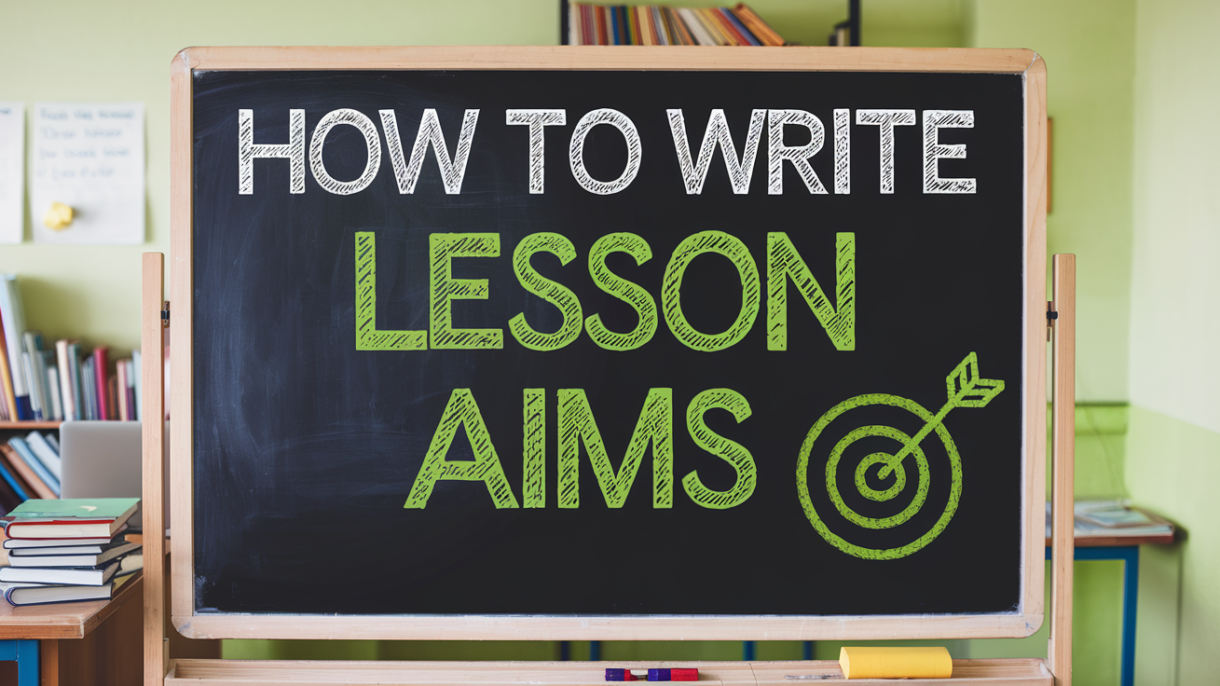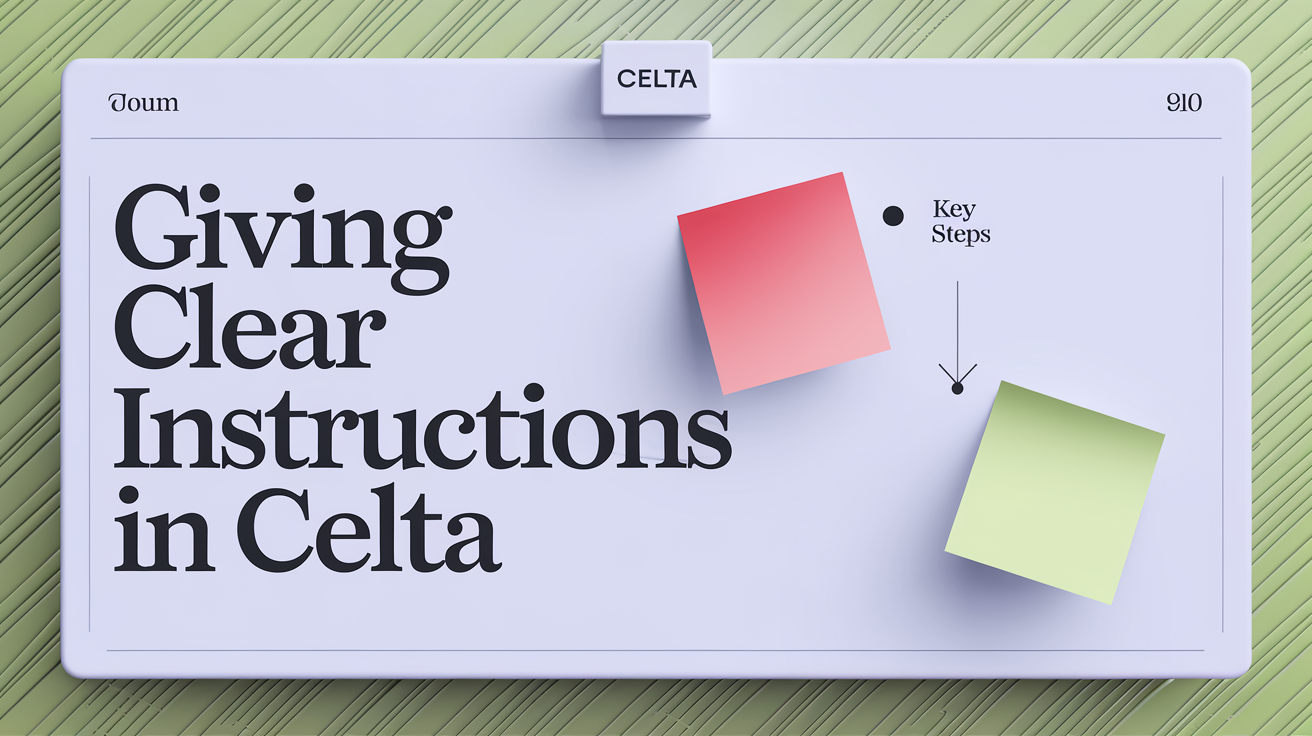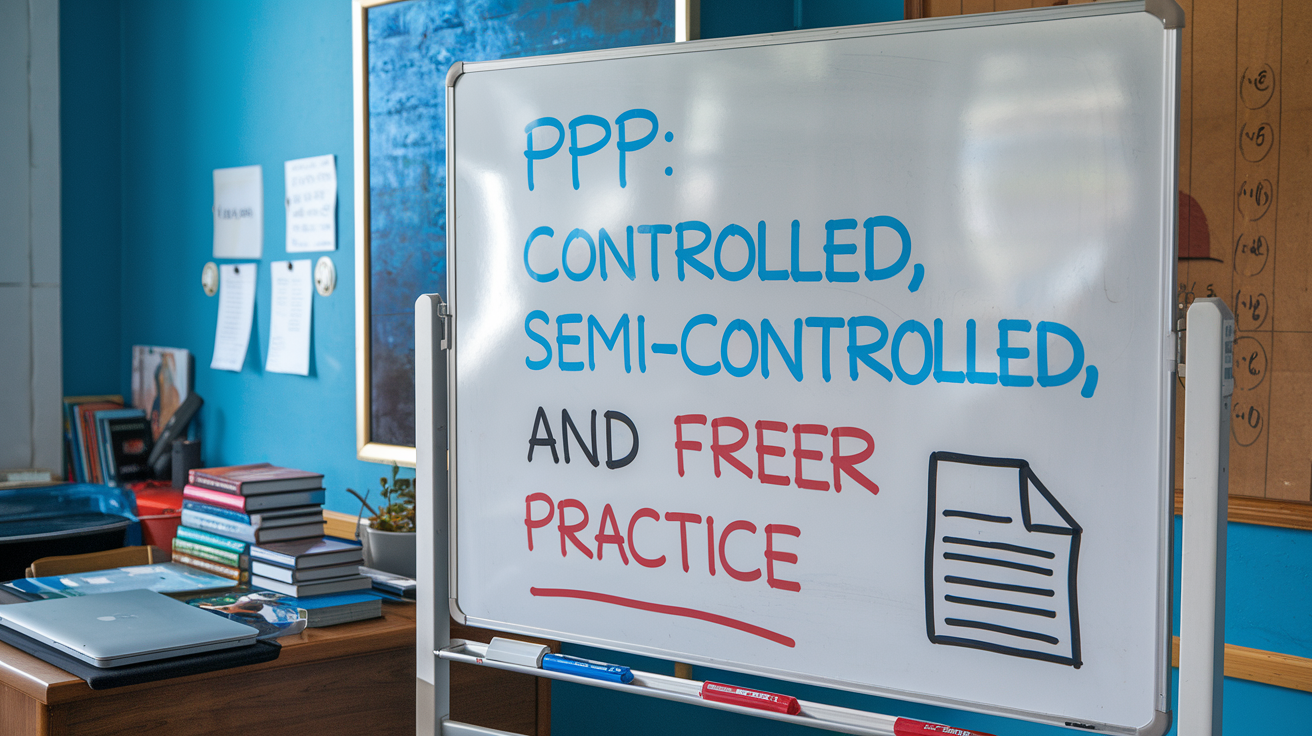
Table of Contents
Introduction
When planning a lesson, formulating clear and focused lesson aims is a critical component for success. Whether you’re working through a TESOL course, undergoing CELTA training, or planning your next class, understanding how to structure your lesson aims can greatly enhance the learning experience. I always tell my CELTA trainees that if your aim is well-defined, then the plan will follow. In this post, I will guide you through the essential elements of lesson aims and provide practical examples for both skills-based and language-based lessons.
Defining your lesson aim is the first step toward a successful lesson.
Why Well-crafted Lesson Aims Matter
Clear, focused lesson aims are invaluable for several reasons:
- They provide a roadmap for your lesson, helping you stay on track and cover all necessary elements.
- They allow you to measure student progress more effectively.
- They help students understand what they’re expected to learn, increasing engagement and motivation.
- They demonstrate your professionalism and preparedness to observers or mentors during TESOL or CELTA assessments.
The Three Pillars of Lesson Aim
Examine this lesson aim to see if you can identify the three essential elements of any lesson aim:
“For students to practice scanning and comprehension reading skills in the context of shopping.”
Did you spot them? Then, let’s go on to examine each of them. Effective lesson aims should always include three main elements: the students, the target skills or language, and the context in which these are presented. Let’s break these down:
1. Students: The focus of any lesson should always be on the students and their learning process. By centering your aims on students, you ensure that the lesson is designed to facilitate learning, rather than merely delivering content. This student-centered approach also encourages you to consider how learning will be measured, ensuring that your lesson is both effective and meaningful.
2. Skills/Language: Your aims should clearly state the specific skills or language points that students will be working on. It’s not enough to simply mention a general skill like “reading.” You should identify the sub-skills involved, such as scanning or inferring meaning. Similarly, if your lesson is focused on language, the specific forms or vocabulary should be stated clearly. For instance, rather than just saying “grammar,” specify the structure, like “regular past forms.”
3. Context: Context is key in language teaching. Language should not be taught in isolation; instead, it should be tied to a relevant context or theme. This context provides meaning to the language or skills being taught and helps students see how what they’re learning applies to real-life situations.

Guidelines for Writing Lesson Aims
To maximize the effectiveness of your lesson aims, follow these guidelines:
- Limit your aims: Don’t list more than one main aim and one sub-aim. This helps maintain focus and clarity.
- Keep it succinct: Lesson aims should be clear and to the point. Avoid the temptation to describe your entire lesson in the aims. Instead, focus on what students should be able to do by the end of the lesson.
- Align your aims: If your main aim is centered on a skill, your sub-aim should focus on a system (grammar, lexis, etc.), and vice versa. This balance ensures that both skills and language are developed in tandem.
Sample Aims for TESOL and CELTA Lessons
To give you a clearer picture, here are some sample aims for both skills-based and language-based lessons:
Skills Lesson
- Main Aim: For students to practice scanning and comprehension reading skills in the context of shopping.
- Sub Aim: For students to learn the lexis (nouns) of clothing items in the context of shopping.
Language Lesson
- Main Aim: For students to practice regular past forms in the context of holidays.
- Sub Aim: For students to practice speaking in conversations in the context of holidays.
- Main Aim: For students to learn and accurately use modal verbs to express possibility and probability in the context of future predictions.
- Sub Aim: For students to apply modal verbs in speaking activities focused on predicting future trends.
These examples show how to structure your lesson aims by combining students, target skills/language, and context in a way that is focused, practical, and aligned with TESOL and CELTA methodologies.
Common Pitfalls in Writing Lesson Aims
While crafting effective lesson aims is crucial, it’s equally important to be aware of common mistakes that can undermine their effectiveness. Here are some pitfalls to avoid:
Being too vague or general: Aims that lack specificity can lead to unfocused lessons. For example, “Students will improve their English” is too broad. Instead, aim for something like “Students will be able to use three new adjectives to describe personality traits in speaking activities.”
Focusing on teacher actions: Remember, aims should center on student learning, not teacher activities. Avoid aims like “To explain the present perfect tense.” Instead, frame it as “Students will be able to form and use the present perfect tense to discuss life experiences.”
Overloading with too many aims: While it’s tempting to cover multiple areas, having too many aims can lead to a scattered lesson where nothing is achieved in depth. Stick to one main aim and one sub-aim for most lessons.
Using unmeasurable verbs: Terms like “understand,” “know,” or “appreciate” are difficult to assess. Opt for observable and measurable verbs such as “identify,” “produce,” “demonstrate,” or “compare.”
Neglecting the context: Aims that don’t include a meaningful context can result in isolated language practice. Always tie your aims to a relevant theme or situation.
Misaligning aims with student level: Ensure your aims are appropriate for your students’ proficiency level. An aim that’s too advanced or too simple can lead to frustration or boredom.
Forgetting about skills integration: While it’s important to have a clear focus, remember that language skills are often interconnected. Your aims should reflect this integration where appropriate.
Strengthening Your Lesson Aims
Crafting effective lesson aims is a skill that improves with practice. Let’s examine some weak aims and see how we can transform them into stronger, more focused objectives that align with TESOL and CELTA standards.
Example 1:
Weak: “Students will learn about past tense.”
Improved: “Students will be able to form and use regular past tense verbs accurately in speaking about weekend activities.”
This improved aim is more specific, measurable, and contextualized. It clearly outlines what students will be able to do by the end of the lesson.
Example 2:
Weak: “To practice reading skills.”
Improved: “Students will develop skimming and scanning techniques to extract key information from travel brochures.”
The revised aim specifies the sub-skills being targeted (skimming and scanning) and provides a clear context (travel brochures).
Example 3:
Weak: “Students will improve their vocabulary.”
Improved: “Students will be able to use and spell correctly 8-10 new adjectives related to emotions in written descriptions of personal experiences.”
This improvement quantifies the vocabulary goal, specifies the word type, provides a theme, and indicates how the vocabulary will be applied.
Example 4:
Weak: “To teach listening comprehension.”
Improved: “Students will demonstrate understanding of main ideas and supporting details in a podcast about environmental issues by answering comprehension questions and participating in a group discussion.”
The stronger aim specifies the type of listening material, the topic, and how comprehension will be demonstrated.
Example 5:
Weak: “Students will practice speaking.”
Improved: “Students will increase their speaking fluency by engaging in a 5-minute role-play negotiating a business deal, using at least 5 expressions for agreeing and disagreeing.”
This revision provides a specific speaking task, quantifies the duration, and includes language focus points.
When revising your aims, consider the following questions:
– Is it clear what students will be able to do by the end of the lesson?
– Does the aim specify the language or skills being targeted?
– Is there a meaningful context or theme?
– Can the achievement of this aim be observed or measured?
– Is the aim appropriate for the students’ level and the lesson duration?
By consistently applying these principles, you’ll craft lesson aims that not only meet TESOL and CELTA standards but also provide a clear roadmap for effective language instruction.
Want to master the art of crafting effective lesson aims and plans? Check out my “CELTA Lesson Planning” course. This online course, created by experienced CELTA trainer Ahmad Zaytoun, offers practical strategies to elevate your lesson planning skills. The course is useful whether you’re a CELTA trainee or an experienced teacher.









0 Comments